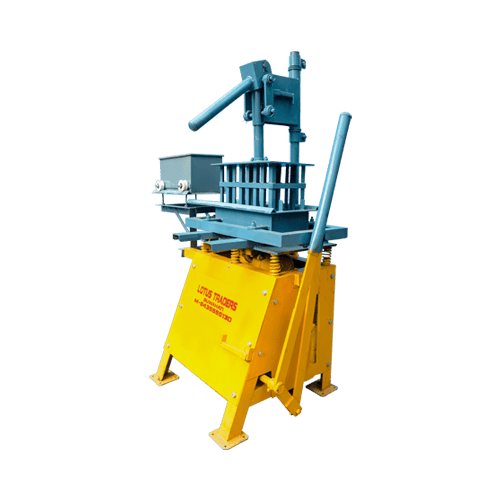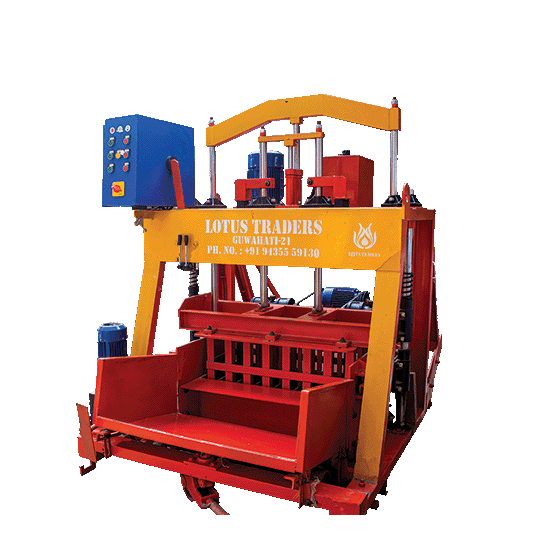Slump Test Apparatus
- High Quality Materials
- Compliance With Standards
- Clear Product Information
- Warranty & Support
- Product Testing & Certification
- Delivery & Policy
- Ask a Question
- Estimated Delivery: 5 Days – 10 Days
- DESCRIPTION
FEATURE | SPECIFICATION |
Material | Mild Steel |
Usage/Application | Concrete Testing |
Voltage | Hand operated |
slump test apparatus size | Cone Size 200mm lower dia 100mm upper dia 300mm height |
Height | Cone Ht 300 mm |
slump cone test apparatus dimensions | Cone Lower 200mm upper 100mm |
Mounting Type | On Foot |
Information About Slump Test Apparatus:
What is slump test apparatus?
An instrument used to gauge the consistency of newly laid concrete is called a slump test apparatus. It is made out of a metal cone that is 30 cm tall with a base diameter of 20 cm and a top diameter of 10 cm.
After setting the cone on a level, non-absorbent surface, three layers of concrete are poured into it and a 16 mm steel tamping rod is used to rodde each layer 25 times.
The slump or the difference between the height of the concrete after the cone is removed and the cones initial height is measured after the cone has been filled and gently raised.
The construction industry frequently uses the slump test because it is an easy and rapid approach to determine the consistency of concrete. When it comes to concretes workability—that is, how easily it can be put and compacted—its slump plays a significant role. Low slump concrete is stiffer and more challenging to work with whereas high slump concrete is more flexible and simpler to deal with.
The water to cement ratio of concrete can also be determined indirectly using the slump test. The slump of concrete will be greater in high water cement concrete than in low water cement concrete.
This is so that the concrete becomes more fluid due to the lubricating effect of the water in the concrete. On the other hand, concrete with a high water to cement ratio will also be less strong than concrete with a low ratio.
Key features of slump test apparatus
One essential tool in construction for determining the quality and workability of fresh concrete is the slump test apparatus. Among its notable features are:
· Mould or Cone: The device is comprised of a steel or plastic container in the shape of a truncated cone or a metallic mould. The moulds height, top diameter and base diameter all meet conventional measurements.
· Base Plate: The mould comes with a stable base plate that offers a level surface on which to conduct the test.
· Tamping rod: During the filling process, this rod usually composed of steel is used to compact and level the concrete inside the mould. It assists in ensuring even compaction and getting rid of air gaps.
· Measuring Scale: A graduated scale that is marked in millimeters or inches along the tamping rod is typically included with the device. This scale gauges the concretes slump following the mould removal process.
· Accessories for Handling: To make handling and manipulation of some equipment easier during testing, handles or grips may be fitted.
· Smooth Finish: The moulds inside surface is smooth to make it simple to remove from the compacted concrete without altering the form of the concrete.
· Sturdy and Durable Construction: The device is constructed from sturdy materials like metal or strong plastic to withstand handling and continuous usage guaranteeing testing accuracy and durability.
Together, these characteristics give engineers and technicians the capacity to accurately perform the slump test giving important information about the consistency and workability of fresh concrete—two important aspects of evaluating whether or not it is suitable for use in construction.
Benefits of slump test apparatus
With its many advantages for quality assurance and determining the consistency of concrete, the slump test apparatus is an indispensable instrument in the construction sector. The following are some of the main benefits of utilizing this device:
· The slump test equipment is incredibly easy to use and requires little skill or training. This ensures consistent and dependable outcomes and makes it a tool that both novices and seasoned experts may use.
· Because of its lightweight and compact design, the equipment may be easily transported and used at different construction sites. Because of its adaptability, testing may be done on-site giving quick answers about the workability and quality of the concrete.
· The slump test offers a rapid and effective way to assess the workability and consistency of freshly mixed concrete. This quick evaluation allows for prompt concrete mix modifications, guaranteeing peak performance and averting possible problems during placement and finishing.
· The water-to-cement ratio of the concrete mix is inferred indirectly by the slump test. Whereas a smaller droop denotes a lower water-to-cement ratio, a higher slump points to a higher ratio. In order to ensure proper strength and optimize the proportions of the concrete mix, this information is very helpful.
· The slump test equipment is a cost-effective option for quality assurance procedures because of its low cost. Its lengthy lifespan and resilience increase how cost-effective it is.
· Because the slump test is a standardized process, results are guaranteed to be consistent and similar in all testing conditions. Construction industry personnel can more easily communicate and analyze test results because to this uniformity.
· Through the use of the slump test, concrete consistency may be continuously monitored, assuring consistency between batches and reducing variances in workability. In order to keep concrete constructions performing and having the necessary quality, consistency control is essential.
· The slump test is a useful tool for early warning systems because it can spot possible issues with the concrete mix before they become serious and lead to defects or delays. This proactive strategy protects the integrity of concrete structures and helps to avoid expensive rework.
· Building rules and standards frequently include the slump test which is a generally recognized technique for determining the workability of concrete. Concrete constructions will meet the required performance and safety criteria if these requirements are followed.
· A wide range of concrete mixtures including high strength, lightweight and conventional weight concrete can be tested for slump. It is a handy tool for a range of building applications because of its versatility.
· Finally, the slump test apparatus equipment is still a vital instrument in the construction industry since it offers a quick, easy and affordable way to determine if concrete is workable and to guarantee the uniformity and quality of concrete structures. Because of its many advantages, it is a vital instrument for maintaining conformance to building laws and standards and for quality control.
Uses of slump test apparatus
The building industry makes extensive use of the slump test device for a number of reasons such as:
· Evaluating Concrete Workability: The slump test is primarily used to ascertain the consistency and workability of newly mixed concrete. Concretes workability is an important characteristic since it affects how easy it is to place, compact, and polish. When it comes to concrete workability, a slump test offers a prompt and accurate assessment that permits modifications to the mix design or placement techniques as needed.
· Monitoring Batch Consistency: Throughout the construction process, the slump test is frequently used to keep an eye on the consistency of concrete batches. Uniformity in the qualities of the concrete is ensured by consistent workability, which minimizes variances in strength, durability and appearance and leads to predictable performance.
· Assessing the Water-Cement Ratio: The slump test is a crucial aspect that affects the workability and strength of concrete. It indirectly indicates the water cement ratio. A larger slump often denotes a higher ratio of cement to water whereas a lower slump denotes a lower ratio. Utilizing this information will help you attain the appropriate strength and workability attributes by optimizing the mix proportions.
· Finding any Mix Problems: The slump test is a useful tool for seeing any mix issues with the concrete mix at an early stage. Inadequate batching, inaccurate water admixture dose, or fluctuations in aggregate gradation are some examples of problems that could be indicated by inconsistent slump results or notable departures from predicted slump ranges. When these problems are identified early, corrective measures can be taken before they result in expensive rework or structural defect.
· Ensuring Compliance with Building Codes and Standards: To confirm that concrete satisfies the required workability requirements, building codes and standards frequently demand the slump test. By following these guidelines, concrete structures are guaranteed to be built to endure the desired loads and environmental circumstances.
· Slump test: A vital instrument for quality control in the production of precast concrete, the slump test is used during the manufacturing process. Precast concrete components with consistent slump values are guaranteed to have consistent qualities and to adhere to the design specifications.
· Research and Development: The slump test is widely used to assess how different admixtures, aggregates and mix designs affect the workability and performance of concrete in research and development studies. For the purpose of creating concrete mixtures with better qualities, this knowledge is essential.
How slump test apparatus works?
A straightforward yet useful instrument for assessing the consistency and workability of freshly mixed concrete is the slump test device. It is composed of a base plate, a tamping rod, a measuring tape and a metal cone that is also referred to as an Abrams cone or slump cone.
Step-by-Step Procedure:
· Prepare the droop cone by making sure it is dust-free, dry and clean. Position the base plate onto a non-absorbent surface that is level.
· Filling the Cone: To stop concrete from sticking thoroughly moisten the slump cone’s interior. Acquire a representative sample of recently mixed concrete while preventing excessive vibration or segregation.
· First Layer: Add about one-third of the concrete sample to the cone. Rod the concrete equally throughout the cross-section 25 times with the tamping rod.
· Second Layer: Using the same technique, add another third of the concrete sample and tamp it 25 times.
· Third Layer: Add the remaining concrete sample to the cone until it reaches the top. Make sure the concrete is level with the top of the cone by tamping it 25 times.
· Remove Extra Concrete: Remove any extra concrete that is over the top of the cone by striking it off with a straight edge.
· Cone Lifting: Carefully raise the slump cone straight up without causing any damage to the concrete.
· Measuring Slump: Take a quick measurement of the height difference between the slumped concrete and the cone’s initial height of thirty centimeters. The slump value is this difference.
Interpretation of Slump Values:
Slump values give an indicator of the consistency of the concrete and are commonly expressed in centimeters:
· Low Slump (0–2 cm): Stiff concrete may need more water because it is harder to put and compact.
· Concrete with a medium slump (3–8 cm) is quite workable and appropriate for most uses.
· High Slump (9–12 cm): Easily placed and compacted, very fluid concrete that may need extra cement or admixtures to regulate flow.
· Over 12 cm of Slump: Concrete that is too fluid and prone to segregation and settling may need to have the mix redesigned or placing techniques adjusted.
A useful method for determining the workability of concrete and guaranteeing the caliber of concrete constructions is the slump test. Construction experts find it to be a vital tool due to its portability, simplicity and speedy results.
Conclusion
In order to assess the consistency and workability of freshly mixed concrete, the slump test device is an essential instrument in the construction industry. Made up of a metal or plastic mould usually a cone shaped container which has precise measurements that meet industry requirements. Included in it are a base plate for supporting the mould during testing and a steel-based tamping rod for compacting the concrete inside the mould.
The process entails layering newly mixed concrete into the mould and using a tamping rod to compact each layer. After the mould is filled, it is carefully removed, allowing the concrete to cool and become less dense. Technicians can measure the slump, or the height difference between the original position of the tamping rod and the settled concrete, using a measuring scale marked on the rod.
Its design makes sure that figuring out the consistency of concrete—which indicates its workability and quality—is simple, accurate and repeatable. In order to help engineers and construction experts make educated judgments about the design of the concrete mix and its appropriateness for building, the device evaluates the degree of flow and deformation of the concrete under its weight.

Concrete Mixer Machine With Lift

Manual 4 Cavity Brick Machine

Egg Laying Type Block Making Machine

Double Wheel Trolley

Needle Vibrator











